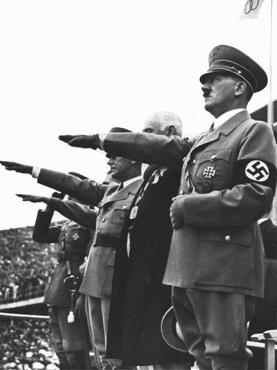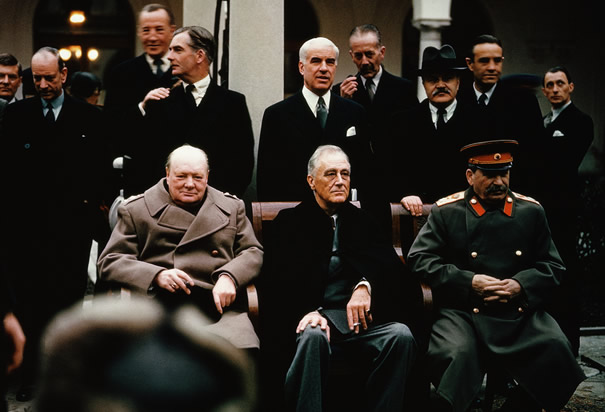- Lasted for two weeks. August 1-16, 1936.
- It signaled Germanys comeback to the real international community after being cut out from the world after the defeat of WWI.
- Hitler and his Nazi dictatorship transformed the city of Berlin to appear as a peaceful and tolerant Germany.
- Any non-Aryan, like Jews or Roma (Gypsies) were allowed to participate in the games when typically, they weren't even allowed to play German sports.
- The regime temporarily removed anti-Jewish signs and newspapers toned down their harsh critics.
- Many Jews in different countries tried to boycott the Games will others won medals in the Berlin Olympics.
- Some Jews even started an organization to move the games to Barcelona, Spain but it was canceled due to the Spanish Civil War outbreak in July 1936.
- Most tourists were unaware that Hitler had ordered for all Roma in Berlin to be roundup.
- By July 16, 1936, 800 Roma were arrested and put into camps.
- Nazi officials also ordered that foreign visitors should not recieve criminal penalties of German anti-homosexuality laws.
- Forty-nine athletic teams from all around the world competed in the games.
- Germany had the largest team with 348 athletes, U.S. haf the second largest with 312 athletes, including 18 Affrican Americans.
- The Soviet Union did not particicapte in the Olympics.
- After the Games, German expasionist policies and rascist persecution accelerated, resulting in WWII and the Holocaust.
Sunday, February 23, 2014
Hitlers Olympics 1936 By:Micaela Quiroga
The Holocaust - Jessica Poldrugo
- In 1939, following the outbreak of WWII, Jews were subject to many wartime ordinances such as a curfew, restriction from entering certain areas in German cities, reduced food rations, and most famous: they must be identified by wearing the Star of David.
- Jews were subjected to living in designated areas called ghettos (except for German Jews, who lived in "Jewish Houses"). Their property was confiscated to "support the war effort."
- Mass deportation to ghettos and killing centers is associated with the "Final Solution." Jews came from all Reich conquered nations: Poland, Germany, Czechoslovakia, Austria etc.
- Other groups were persecuted on political, ideological, and behavioral grounds, among them Communists, Socialists, Jehovah's Witnesses, and homosexuals.
- Ways of extermination at the camps include gas chambers, crematoria, and sometimes Nazi soldiers would shoot them.
- Overall, about six million Jews died as a result of the holocaust.
- The final months of the war, the survivors in the death camps were forced into the "Death March." This was a result of the fear that the Allies would liberate camp inmates.
Rape of Nanking - Luke Newman
- December of 1937, Japanese soldier march into Nanking and kill 300,000 Chinese people
- they killed half of the population of the city
- After japan defeated china at the battle of Shanghai, 50,000 Japanese soldiers march into Nanking
- Although there were more Chinese soldiers in Nanking had plenty of ammunition, the Japanese still took them down.
- The first step was to take away any threat from the 90,000 Chinese soldiers that surrendered
- so the eliminated all the Chinese POWs
- Then they took women above the age of 70 and below the age of 8 and took them away to be sexually abused
- 20,000 women were gang rapped and would be killed after so they wouldn't bear witness to the crime
- Pregnant women were raped, then had their bellies slit open and the fetuses torn out
- Japanese forced Chinese men to rape their own daughters, sons to rape their mothers, and brothers their sisters, while the rest of the family was made to watch

Friday, February 21, 2014
#38 Erwin Rommel By: Kyler Brosnahan
He was one of the most known Nazi commander during WWII. He played significant roles in both D-Day and at El Alamein in North Africa. He also helped with the Atlantic Wall, by designing fortifications. He was a master of armored warfare. Rommel was also famous for his commanding of the Afrika Korps. He earned his nickname "the desert fox" for his bravery and courage. Rommel was a tactical genius and was awarded by the italians. But he was also noticed by The United States, General Montgomery and General Patton were two of his adversities.
He was one of the most known Nazi commander during WWII. He played significant roles in both D-Day and at El Alamein in North Africa. He also helped with the Atlantic Wall, by designing fortifications. He was a master of armored warfare. Rommel was also famous for his commanding of the Afrika Korps. He earned his nickname "the desert fox" for his bravery and courage. Rommel was a tactical genius and was awarded by the italians. But he was also noticed by The United States, General Montgomery and General Patton were two of his adversities.
Joe Louis vs Max Schmeling by Kierstin Livermore
The first fight between Louis and Schmeling took place on June 19, 1936, at the famous Yankee Stadium in New York, New York. The stadium was completely sold out with spectators wanting to see the rising star against the famed world champion. As rounds went by, Louis suffered various injuries, including one to the eye. Louis remained busy, trying to land a punch that would give him a knockout victory, but, with eyesight trouble and Schmeling's jab constantly in his face, this proved impossible.By round twelve, Schmeling was far ahead on the judges' scorecards. Finally, he landed a right to Louis' body, followed by another right hand, this one to the jaw. This was Louis' only knockout defeat during his prime.
The Louis-Schmeling rematch came on June 22, 1938 – one year from the day Louis had won the world Heavyweight title. The fighters met once again in a sold-out Yankee Stadium in New York City with 70,000 attendees. Louis' strategy from the first fight had changed from the first round. He dedicated all of his energy to the first three rounds of the fight. After only a few seconds of fighting, Louis unleashed a tireless barrage on Schmeling. Referee Arthur Donovan stopped action for the first time just over one minute and a half into the fight after Louis connected on five left hooks and a body blow to Schmeling's lower left which had him audibly crying in pain. After released from his corner, Louis focused on Schmeling's head. With few defenses left at this point, Louis connected at will, sending Schmeling to the canvas for the third time in short order, this time near the ring's center. At the count of eight, Schmeling's cornerman, Max Machon, was in the ring and referee Arthur Donovan declared the fight over. Louis was the winner and world Heavyweight champion, by a technical knockout, two minutes and four seconds into the first round. Louis had thrown 41 punches in the fight, 31 of which landed solidly. In contrast, Schmeling only threw 2 punches. Soundly defeated, Schmeling had to be admitted to Polyclinic Hospital for ten days. During his stay, it was discovered that Louis had cracked several vertebrae in Schmeling's back.
The fight had racial as well as political undertones. Much of black America pinned its hopes on the outcome of the fight, seeing Louis' success as a vehicle for advancing the cause of African Americans everywhere. Louis went on to become a major celebrity in the United States and, moreover, is considered the first true African American national hero. Louis and Schmeling developed a life-long friendship outside the ring, which endured until Louis' death in 1981. Schmeling lived unitl 2005 at the age of 99.
General Patton - Naoki Atkins
*On Dec. 26, troops led by Gen. Patton arrived at the Belgian city of Bastogone to provide relief for the American force. The victory at Bastogone helped blunt the German offensive. It also became a symbol of American strength and determination (Battle of the Bulge)
-In 1943 he used daring assault and defense tactics to lead the 7th US army to victory at the invasion of Sicily.
-Under Patton's leadership, the 3rd Army swept across France, capturing town after town
-Nicknamed "Old Blood and Guts"
Lend Lease Act by kassandra nava
Lend Lease Act By : Kassandra Nava
- Franklin D. Roosevelt was the president who signed the lend lease act.
- this form passed March 11, 1941 to show the US for a neutral stance.
- After signing the Lend Lease Act that stated they would remain neutral, Franklin Roosevelt still searched for ways to help Great Britain.
- however the neutrality acts limited arms sales to "cash and carry" purchases by belligerents.
- Franklin Roosevelt declared large amounts of U.S weapons and ammunition "surplus" authorized their shipment to Britain in the mid 1940.
- even though this form was to state the US neutrality, it actually brought them one step closer into the war.
- after aiding Great Britain, they furthered their assitance and helped China when they were invaded by Japan .
- after aiding China and cutting off japans trade(oil supply) they were outrageous and bombed pearl harbor December 7 1941.
- the bombing of pearl harbor was the event that officially involved the US into the war.
- the lend lease act was getting goods to the allies for quite some time until a reverse lend lease act started to form.
- the US started receiving goods and services.
- the lend lease act was critical in winning the war, however after a collision it was time to end it.
- the lend lease act ended up providing 50.1 billion dollars to the allies.
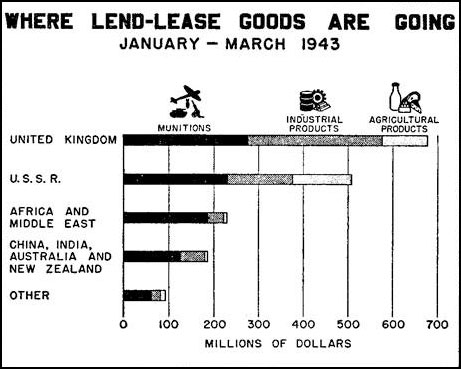
Thursday, February 20, 2014
Battle of Guadalcanal - Erin Klimisch

The Battle of Guadalcanal
- The Battle of Guadalcanal is significant because it was the first battle in the American amphibious campaign to liberate the pacific from Japanese occupation.
- One of the longest pacific wars.
- Became known as the 'Iron Bottom' sound because of the large amounts of ships lost on both the American and Japanese sides.
- It took place in 1942 when U.S. Marines landed on August 7th.
- It took about 6 months for America to defeat Japan.
- If Japan captured the island, they could cut off the sea route between Australia and America.
- If Americans controlled the island, they would be better able to protect Australia from Japanese invasions and also protect Allied build-up in Australia that would act as a spring board for a major assault on Japan.
Jared Tanner
War
Bonds
War Bonds are debt securities issued by a government to finance military operations
and other expenditures in time of war. These bonds also remove money from
circulation and thus also help to control inflation. President Franklin D. Roosevelt's advisers favored a system of tax increases and
enforced savings program. This would permit increased spending while decreasing
the risk of inflation.
At first they were called Defense
Bonds and issued by the U.S. Government, but that name was changed to War Bonds
after the Japanese attack on Pearl Harbor on Dec 7, 1941. The bonds sold at 75
percent of their face value in denominations of $25 up to $10,000, with some
limitations. War Bond propaganda was all over the United States during the war.
Radio, Newspapers and magazines all preached the patriotism of buying bonds.
Pearl Harbor - Robert Shipma
Due to the Japanese aggression towards China, the Roosevelt administration granted financial assistance to China. Japan continued and the US cutoff trade with Japan, but continued negotiations. Without Japan’s main source of oil, they had to do something or else in the next year Japan would bankrupt. Japan sent out a fleet of battleships to approach Hawaii from the Northwest. Up and until 7:54 a.m., December 7, 1941, no one seriously suspected anything. One minute later, the entire American bas was under attack by 360 Japanese planes. There were eight American battleships docked in Pearl Harbor that morning. Some ships burned and some capsized and unprepared men were killed. Japan had two waves of attacks. The Americans believed the planes were their own. When the second wave came in, the Americans fought back but were very inefficient. The attack was very short and is known as one of the shortest. Even though it was a short attack, it was a devastating attack. It’s amazing they inflicted as much damage as they could in such a small amount of time. When the day was done, over 2,400 Americans were dead, eight battleships were sunk or disabled, and 177 planes were destroyed. The Japanese lost only 29 planes and 100 men.

Neville Chamberlins Appeasement -Shayley Zusag
Neville Chamberlins Appeasement
Munich Agreement
Shayley Zusag Period 5
- The policy of Appeasement was created from the failure of the League of Nations and the failure of collective security.
- Appeasement: To make political or material concessions to an enemy power in order to avoid conflict.
- In September Chamberlin flies to Germany to negotiate directly with Hitler
- Hitler demands Sudetenland and says refusal means war
- On Spetember 29th Hitler signs a peace treaty with the Untied Kingdom and Germany .
- Hitler, Chamberlain, Daladier and Mussolini meet in Munich
- The treaty states hat Germany would complete its occupation of the Sudetenland, but they would consider other disputed areas.
- Chamberlin returns to Britain saying that there is "peace for our time"
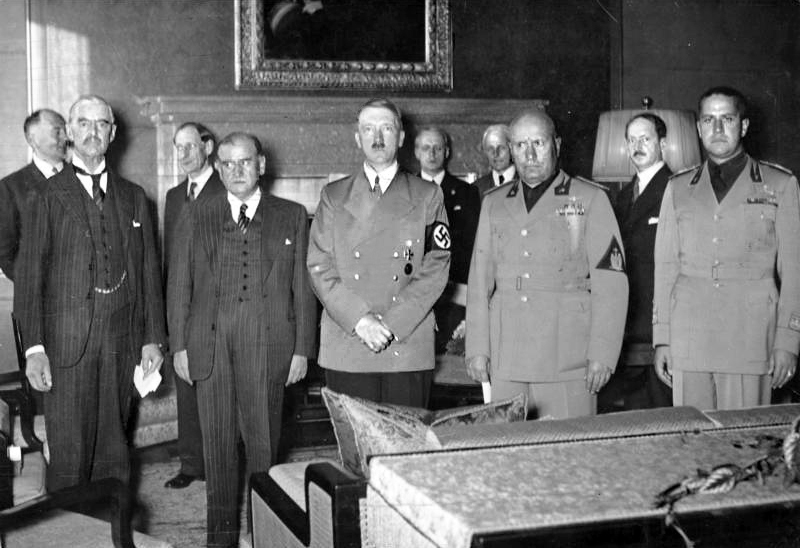
Before signing the Munich Agreement
Hitler declares war on US - jeff phomphakdy
On December 11, Germany declared war on the US. War between the two countries was inevitable because Hitler agreed to help Japan. Hitler thought once Japan fought America, they would help defeat Russia. Attacks on German U-boats and Nazi ideology angered the Germans. Once Japan attacked Pearl Harbor, Hitler decided to declare war. In talks between Japanese ambassador Oshima and German foreign minister von Ribbentrop, they discussed on a formal declaration of war against America. Under terms of the tripartite pact, Germany would be forced to help if Japan was attacked, but of Japan was the aggressor. Von Ribbentrop knew however, that adding the United States would overwhelm the German war effort. Hitler addressed the Reichstag the very same day to defend the declaration and bblamethe war on Franklin Roosevelt's New Deal. Hitler knew that Roosevelt was supported by plutocrats and Jews. With German peoples' support, Germany was allowed to go to war with America.
Adolf Hitler by Steven Wong
Adolf Hitler (1889-1945)
Nazi Germany domination at its height:
- Joined the German army during WWI. This sparked his interest in German politics.
- Became very upset with the German government, the Weimar Republic, and the reparations from WWI.
- In 1919 Hitler joined the extremist party, the German Worker's Party. He renamed it to the Nationalist Socialist German Workers Party a.k.a. Nazi Party.
- 1921 he became the Nazi Party leader and attempted to overthrow the Weimar Republic but failed and was sent to prison where he wrote his famous book of goals/beliefs, Mein Kampf.
- 1933 Hitler was elected chancellor and in 1934 he became Führer.
- Hitler's reign was The Third Reich. It was a one-party state with no civil rights.
- Disloyal Nazis were executed and the Gestape (secret police) killed any traitors.
- Hitler Youth were brainwashed and swore absolute loyalty to Germany.
- Women were prohibited from universities and were forced to have pure-blooded Aryan babies.
- Churches were taken over by Hitler and books he disagreed with were burned.
- Jews, gypsies, etc. were persecuted and killed.
- Nuremberg Laws established in 1935.
- Kristallnacht took place on November 9
and 10 , 1938. It was a violent attack on German Jews. The Jews were sent to concentration camps and executed. - Hitler expanded the German Empire from 1934-1945.
- Late 1944 the Western allies and Red Army closed in on Germany. There was no chance for negotiations because Franklin D. Roosevelt was no longer alive. Hitler and his wife committed suicide on April 30, 1945, shortly after he ordered the destruction of German industrial infrastructure.
Nazi Germany domination at its height:
 |
| Add caption |
Germany Invades Poland - Aly Piedad
- Germany invaded Poland on September 1, 1939.
- Signified the start of World War II.
- Germany broke through Poland defenses quickly-Poland did not receive much aid from Britain or France.
- Warsaw (a city in Poland) withstood 2 weeks of harsh bombing and shelling, until they surrendered to Germany.
- By October of 1939, Germany took over half of Poland.
- Germany did have full control of Poland due to the German - Soviet Pact. The Soviet Union had control of the other half of Poland.
Hitler Becomes Chancellor by Tanner Robertson

- Hitler rose to power during the unpopular Weimar Republic, set in place after World War 1
- In 1919 Hitler joined an extremist right wing group called the German Workers Party
- By 1921 Hitler was leader of the party and changed the name to the National Socialist Workers Party; nicknamed the Nazi Party
- By 1933 the Nazi Party held a majority in the German legislature, allowing Hitler to become Chancellor even after losing the election
- Only a year later Hitler became the Fuhrer turning the German government into a dictatorship.
D-Day- Jolie Nelson
This particular D-Day took place on June 6, 1944. It was the day in World War II in which allied forces invaded northern France by means of beach landings in Normandy.
- Codenamed "Operation Overlord"
- Included British, Canadian, French, and American forces
- Represented the first real threat to Germany's control of Western Europe
- Over 160,000 troops landed on June 6th assisted by over 5,00 ships, aerial bombardment, gliders, and paratroopers
- After 6 weeks of fighting, the allied forces were finally able to break out of the Normandy area
- This opened up a second major front against Germany and convinced Russia to remain in the war
- Prior to d-day, Russians felt that they were the ones doing all the fighting against Germany in Eastern Europe
- Operation Overlord put Russia's fears to rest by opening up a second front
- This eventually aided the Allies in stopping the spreading communist threat in Europe
- In the end it was the Allies who were victorious in the year 1945
Battle of Midway -Marisela LaMadrid
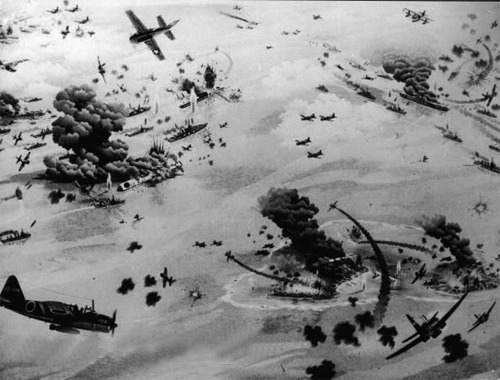
The Battle of Midway was a naval battle between the United States and Japan that took place between 4th and 7th of June, 1942. It was six months after Japan bombed Pearl Harbor. Japan had won many battles, they were very strong in the Pacific. The battle took place near the Midway Island in the Pacific Oceans.
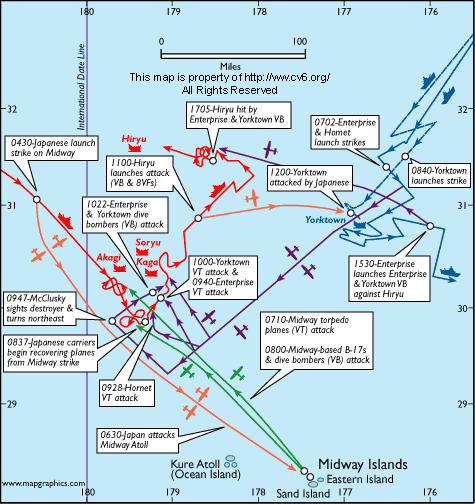
To weaken the naval power of America, Japan decided to attack Midway hence the battle. This battle was considered to been the most important battles of the Pacific campaign during World War II. This battle destroyed Japan's naval strength effectively. During the battle the American Navy inflicted damage of the Japanese fleet which they did not recover from. The Japanese had lost 4 of its most important carries which were of great importance in the Pacific campaign. American code breakers were able to determine the date and location of the battle. It was an important battle because the United States fleet destroyed or damaged the majority of the Japanese Imperial Navies carries.

The Battle of Midway was a naval battle between the United States and Japan that took place between 4th and 7th of June, 1942. It was six months after Japan bombed Pearl Harbor. Japan had won many battles, they were very strong in the Pacific. The battle took place near the Midway Island in the Pacific Oceans.

To weaken the naval power of America, Japan decided to attack Midway hence the battle. This battle was considered to been the most important battles of the Pacific campaign during World War II. This battle destroyed Japan's naval strength effectively. During the battle the American Navy inflicted damage of the Japanese fleet which they did not recover from. The Japanese had lost 4 of its most important carries which were of great importance in the Pacific campaign. American code breakers were able to determine the date and location of the battle. It was an important battle because the United States fleet destroyed or damaged the majority of the Japanese Imperial Navies carries.
The Yalta Conference - Chase Hansen
The Yalta Conference - February 1945
- The Yalta Conference was a meeting of British prime minister Winston Churchill, Soviet premier Joseph Stalin, and President Franklin D. Roosevelt
- The leaders agreed to require Germany’s unconditional surrender and to set up in the conquered nation four zones of occupation to be run by their three countries and France
- Stalin also agreed to permit free elections in Eastern Europe and to enter the Asian war against Japan
- They scheduled another meeting for April in San Francisco to create the United Nations
- Yalta became controversial after Soviet-American wartime cooperation degenerated into the cold war
- Stalin broke his promise of free elections in Eastern Europe and installed governments dominated by the Soviet Union
- Then American critics charged that Roosevelt, who died two months after the conference, had “sold out” to the Soviets at Yalta
Race Between Russia & USA To Berlin - Sophia Lee
Race Between Russia & USA To Berlin - Sophia Lee, Period: 5


*After Germany surrendered, Western Allies raced to get as much of West Germany before the USSR (Union of Soviet Socialist Republics) can get it all. This was because Joesph Stalin, leader of the Russia Soviet Union dreamed of and tried to conquer all of Europe. Competition and tensions arose from USA and USSR for technological dominance. A part of Europe that Germany once had control over was Berlin, but once Germany surrendered, that part of land was fought over from the Eastern and Western Front. The eastern front was the Russians and the western front was U.S. This conflict led to the Battle of Berlin which was one of the battles that soon ended WW2.


*After Germany surrendered, Western Allies raced to get as much of West Germany before the USSR (Union of Soviet Socialist Republics) can get it all. This was because Joesph Stalin, leader of the Russia Soviet Union dreamed of and tried to conquer all of Europe. Competition and tensions arose from USA and USSR for technological dominance. A part of Europe that Germany once had control over was Berlin, but once Germany surrendered, that part of land was fought over from the Eastern and Western Front. The eastern front was the Russians and the western front was U.S. This conflict led to the Battle of Berlin which was one of the battles that soon ended WW2.
Rachel Weaver- Navaho Code Breakers:
Code breakers or also known as code talkers were people who used obscure languages as a means of a secret communication during wartime. This was brought up by Phillip Johnston, a civil engineer. He proposed this at the beginning of World War II since he was a war veteran of World War I. As he had experience and knowledge from the devolving code breakers who were Choctaw Indians during Would War I. During war time there was approximately 400-500 Native Americans in the United States Marine Corps, whose jobs were the transmission of these secret tactical messages. A code book was devolved but only seen and learned in a classroom, never on the battlefield. These were a huge help at the front lines during World War II because they could be communicated over telephone and war radios making information travel fast. Lastly at the Battle of Iwo Jima, six code talkers were assigned who sent out and received 800 messages without any errors. Major Howard Connor, 5th Marine Division Officer stated, "Were it not for the Navahos the marines would never have taken Iwo Jima." The Navaho code talkers were commended for their skill, speed and accuracy through out the war. Code talking continued to the Korean war, but ended early in the Vietnam war.

Code breakers or also known as code talkers were people who used obscure languages as a means of a secret communication during wartime. This was brought up by Phillip Johnston, a civil engineer. He proposed this at the beginning of World War II since he was a war veteran of World War I. As he had experience and knowledge from the devolving code breakers who were Choctaw Indians during Would War I. During war time there was approximately 400-500 Native Americans in the United States Marine Corps, whose jobs were the transmission of these secret tactical messages. A code book was devolved but only seen and learned in a classroom, never on the battlefield. These were a huge help at the front lines during World War II because they could be communicated over telephone and war radios making information travel fast. Lastly at the Battle of Iwo Jima, six code talkers were assigned who sent out and received 800 messages without any errors. Major Howard Connor, 5th Marine Division Officer stated, "Were it not for the Navahos the marines would never have taken Iwo Jima." The Navaho code talkers were commended for their skill, speed and accuracy through out the war. Code talking continued to the Korean war, but ended early in the Vietnam war.

General Eisenhower
General Dwight D. Eisenhower
By: Hannah Aquino
- October 14, 1980 -- March 28, 1969
- 34th president of the United States, Republican (1953-1961)
- known for his organizational skills and military tactics
- five-star general in WWII, served as Supreme Commander for the Allies
- planned and supervised Operation Torch (1942-43) and the invasion of France and Germany (1944-45)
- named Military Governor of the US occupation zone on May 8, 1945
- as governor, he worked to document Nazi atrocities, deal with food shortages, and aid refugees
- became the first supreme commander of NATO in 1951
Erwin Rommel By: Kyler Brosnahan
He was one of the most known Nazi commanders during WWII. He played significant roles in both D-Day and at El Alamein in North Africa. He also contributed to the Atlantic Wall, where he helped design fortifications. Rommel was also famous for his commanding of the Afrika Korps. He earned his nickname "the desert fox" for his bravery and courage. He was a tactical genius and was awarded by the Italians. Rommel was also he also had enemies like, General Montgomery and General Patton who were two of his adversaries from the US. He then later implicated in the plot of killing Hitler and was offered suicide before execution. He decided to commit suicide. The country was not told because of what a hero he was. He died on October 14, 1944.
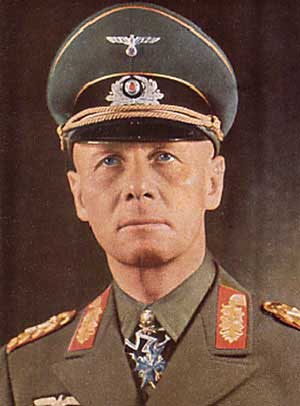

Hirohito by: Madeline Allman
- Hirohito was the emperor of Japan between December 25th, 1926 to January 2nd, 1989.
- Under his orders, Japan attacked nearly every neighboring Asiatic country.
- He became allies with Nazi Germany and Fascist Italy under the Tripartite Act. It basically stated that they would help each other if they were under attack from countries not already involved in the war.
- He also allowed the attack on Manchuria to occur during his rule, as well as sanctioning the use of chemical warfare.
- He was behind the surprise attack on the U.S. naval base in Pearl Harbor.
Joseph Stalin By: Ryan Carcano 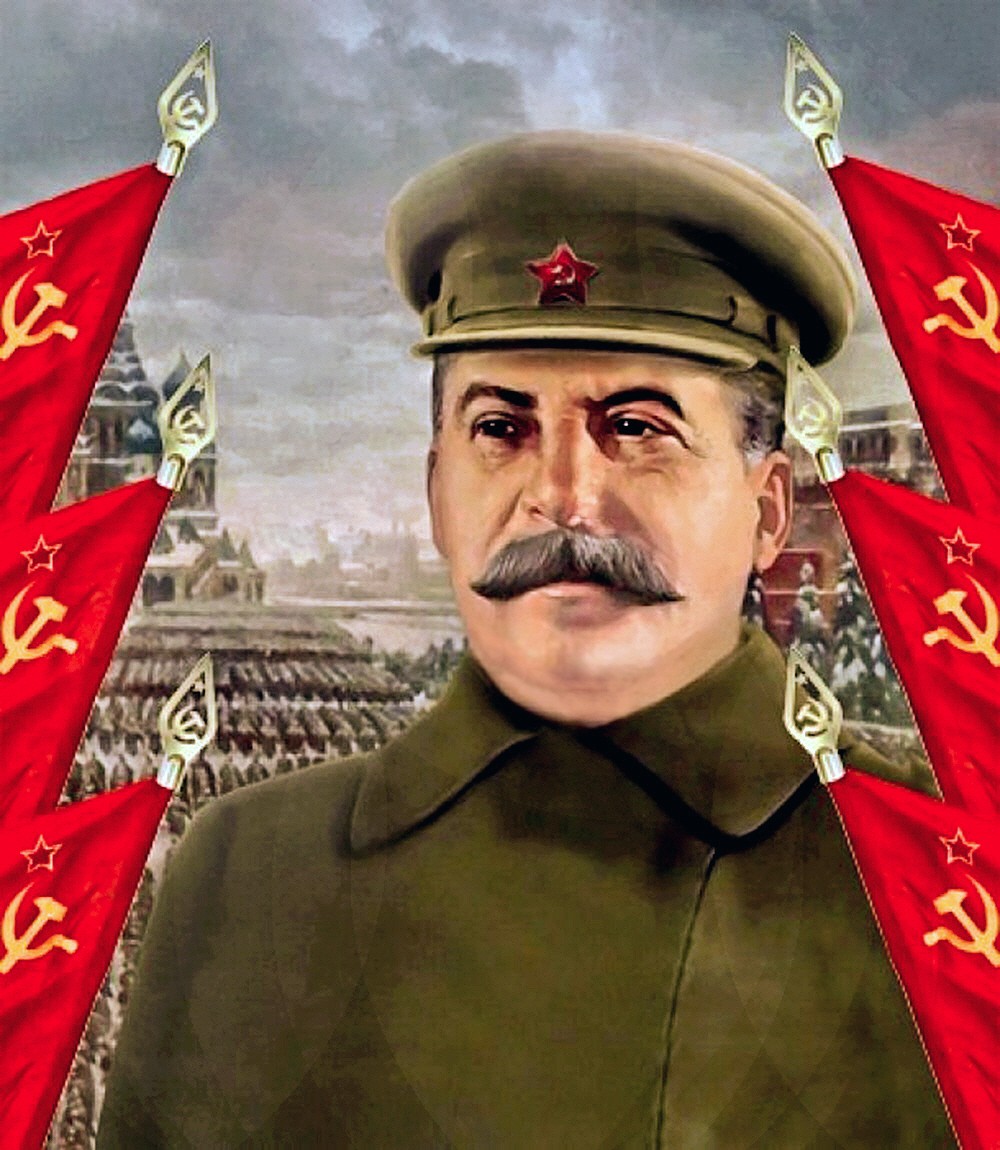
* Born December 18, 1879 in Georgia which was part of the Russian Empire
* Supreme ruler of Soviet Union for a quarter of the century
* Spent 15 years as an activist and was arrested and exiled to Siberia
* In 1922, he was made general secretary of the communist party
* After Lenin's death in 1924, Stalin promoted himself as his political heir and gradually outmaneuvered his rivals

* By the late 1920's, Stalin was the dictator of the Soviet Union
* During the Great Terror of the 1930's, thousands of people were executed and millions were sent to Gulag system of slave labor camps
* His forced collectivization of agriculture cost millions of lives
* After WWII, the Soviet Union entered the nuclear age and ruled over an empire which included most of eastern Europe.
* Stalin dies of a heart attack on 5 March 1953

* Born December 18, 1879 in Georgia which was part of the Russian Empire
* Supreme ruler of Soviet Union for a quarter of the century
* Spent 15 years as an activist and was arrested and exiled to Siberia
* In 1922, he was made general secretary of the communist party
* After Lenin's death in 1924, Stalin promoted himself as his political heir and gradually outmaneuvered his rivals

* By the late 1920's, Stalin was the dictator of the Soviet Union
* During the Great Terror of the 1930's, thousands of people were executed and millions were sent to Gulag system of slave labor camps
* His forced collectivization of agriculture cost millions of lives
* After WWII, the Soviet Union entered the nuclear age and ruled over an empire which included most of eastern Europe.
* Stalin dies of a heart attack on 5 March 1953
#23 Churchill by: Bailey Byrnes
Sir Winston Leonard Spencer Churchill was the British Prime Minister during World War II. He served as a prime minister of Great Britain from 1940 to 1945and again from 1951 to 1955. He led Britain's fight against Nazi Germany in the war.
Churchill was a talented orator, giving many stirring speeches to boost morale. As a close friend of Roosevelt and Truman he hoped to join Americans in building postwar order.
From 1938 to the outbreak of the war in September Churchill urged the government to be more pro-active against Hitler. During the war he was the most dominant figure in British politics. Churchill was in London during the blitz. He regularly visited areas that were bombed. He also took a role in the military issues.
During the war Churchill held a number of meetings with other war time leaders like FDR. In August of 1941 Roosevelt and Churchill signed the Atlantic Charter, a treaty of friendship the solidified their alliance. Four years later Churchill, FDR, and Stalin attended the Yalta Conference in February of 1945. Churchill didn't completely trust Stalin so he hoped for strong Germany to be a buffer.
Sir Winston Leonard Spencer Churchill was the British Prime Minister during World War II. He served as a prime minister of Great Britain from 1940 to 1945and again from 1951 to 1955. He led Britain's fight against Nazi Germany in the war.
Churchill was a talented orator, giving many stirring speeches to boost morale. As a close friend of Roosevelt and Truman he hoped to join Americans in building postwar order.
From 1938 to the outbreak of the war in September Churchill urged the government to be more pro-active against Hitler. During the war he was the most dominant figure in British politics. Churchill was in London during the blitz. He regularly visited areas that were bombed. He also took a role in the military issues.
During the war Churchill held a number of meetings with other war time leaders like FDR. In August of 1941 Roosevelt and Churchill signed the Atlantic Charter, a treaty of friendship the solidified their alliance. Four years later Churchill, FDR, and Stalin attended the Yalta Conference in February of 1945. Churchill didn't completely trust Stalin so he hoped for strong Germany to be a buffer.
Subscribe to:
Posts (Atom)

